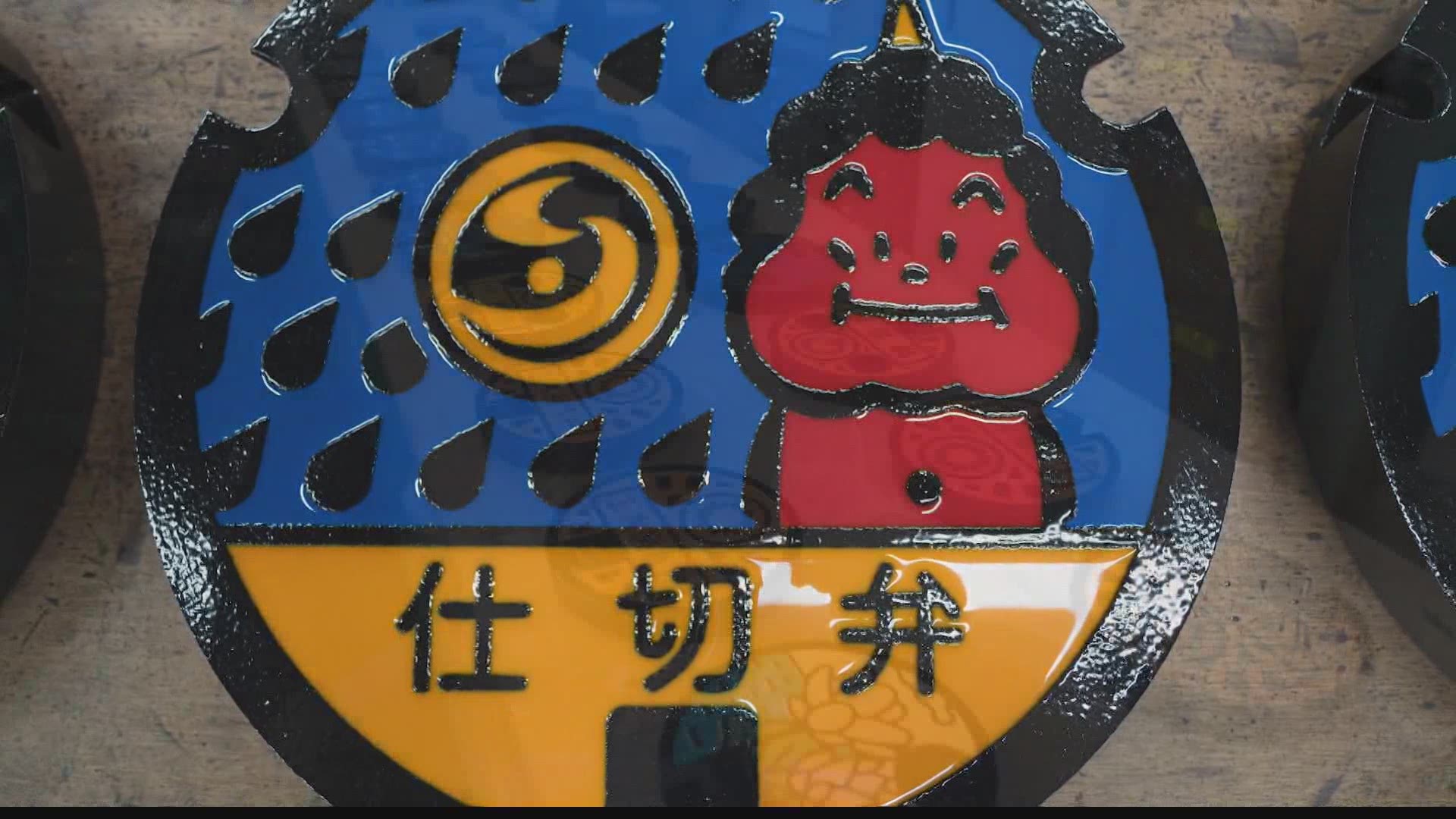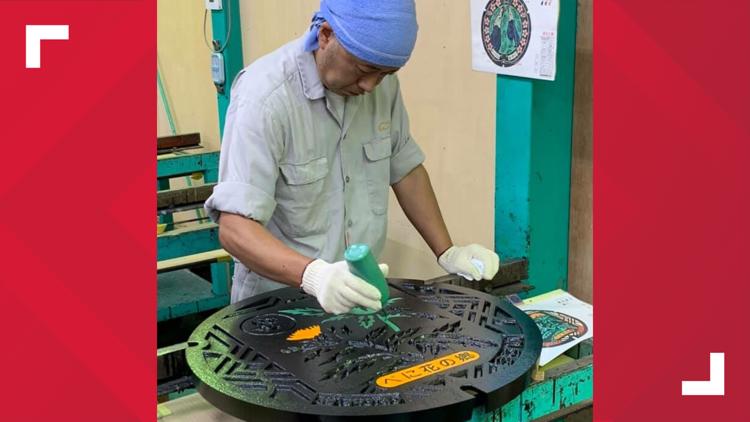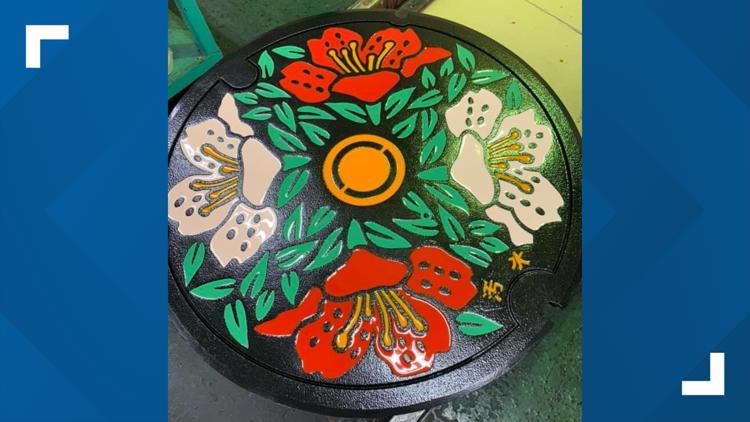TOKYO, Japan — To see the wonders of Japan, even the quirkiness of this country, you usually look up. But if you do that long enough you will miss the curiosities that most folks step over every day.
Japan is a country known for manholes.
"Some are spectacularly beautiful," said tour guide Hugh Cann. "They use it to symbolize something culturally or historically significant. Some are quite intricate in their design."
The street art designs vary by city. There are hundreds of different manholes. And no one knows them better than 42-year-old Kohei Shirahama.
"I love manhole covers," said Shirahama.
He is not alone. There is a legion of fans, often called Drain spotters.
"We used to be called Manhole lovers. But we call ourselves Manholers," said Shirahama. "Or they call us Maniac or nerdy."
Shirahama's friends call him by a different name.
"Manhole geek," said Shirahama.
For 20 years, Shirahama has traveled all over Japan to photograph different manholes.

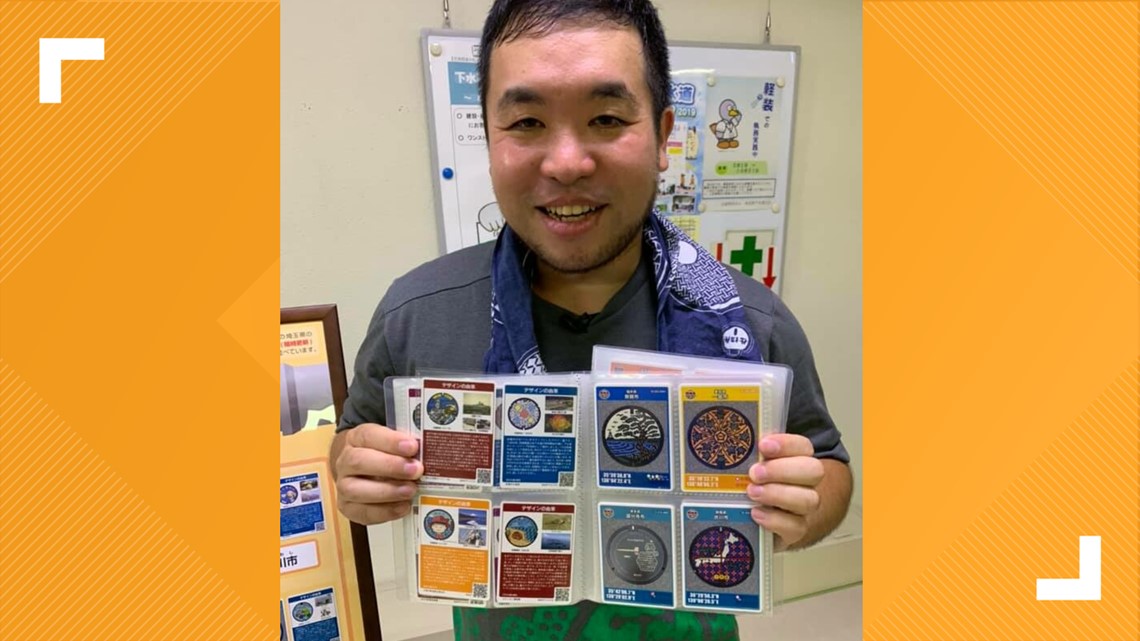
"I've taken about 100,000 photos," said Shirahama. "Everywhere we go, the villages have their own unique designs. There are so many. It never stops. We have a joy of sharing them. There are some people who research the backgrounds to learn more about the designs."
"My favorite one is the manhole at a shrine in Fuji City at the bottom of Mt. Fuji," said Shirahama. "The design has Mt. Fuji and a well with water splashing. There was a well where holy water came out. But, because of road construction, they had to close the well. They came up with this sophistical design for a manhole cover. They have an annual event at the shrine. They have this holy water that comes out of the well for this holistic event at the shrine. It's the only design in the world."
"When I started, it was so rare to do this," said Shirahama. "So people thought it was a strange hobby. They thought I was a strange person. But recently, I have so many people to share this. It's been recognized by the rest of the world, so they think it's neat. I've been doing this before my niece and nephew were born. They think it's interesting," said Shirahama.
Not everyone understands the obsession with manholes.
"He needs to find a life," jokes Cann.
I learned the life of a manhole begins at a plant in Kuki, Saitama.
Japanese Manhole Covers
"This is the foundry that designs and produces manholes," said senior vice-President Yuko Nagashima. "We create 250 large manholes and 100 small manholes every day."
Artists work with cities across Japan to create a variety of designs.
"We've featured Mt. Fuji, cherry blossoms, fire engines," said Nagashima.
The work is hard, hot and requires an artistic flair. They pump out hundreds of manholes every day. The result is a national obsession. Websites, Facebook pages, even a manholer convention.
"There's an annual event called Manhole Summit that started with 300 participants. Last year, there were 5,000 people," said Shirahama.
The water circulation center in Saitama showcases dozens of manholes. And did we mention the trading cards? That's right. Fans collect them. But to get them all they must visit each municipality. Shirahama has 200 of the 600 available.
Shirahama's favorite manhole trading card is a design featuring a cat-like character opening a manhole cover.

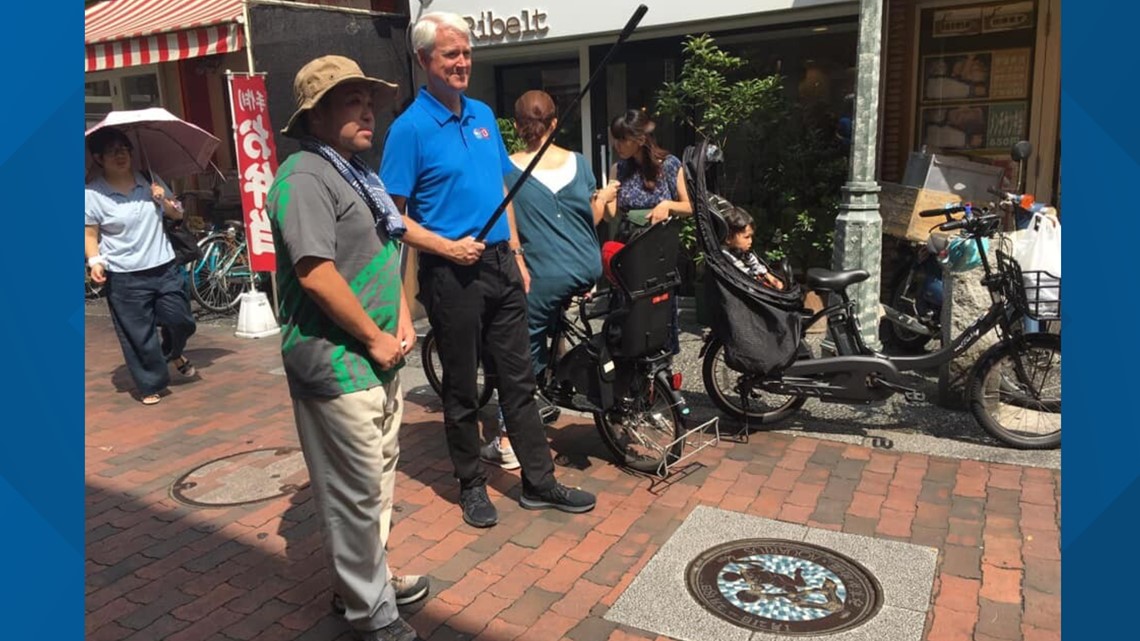
He has created a manhole map with his friends showing pictures of the manholes that he has photographed over the years.
In many ways, the street art makes sense here.
"Japanese culture defies definition. I call it a parody of itself," said Cann. "In Kyushu, they're very big on horses. So, you'd have a horse. In Matsumoto, northwest of Tokyo, it's a Castletown. They do have one with a castle."
So, if you ever visit Japan, enjoy the iconic places and the cultural must-see locations. But don't forget to look down. Some of the best pieces of art are at your feet.
"I'm happy to see these on the street. And, if it makes someone smile and happy, it makes me smile," said Nagashima.
"It's a Japanese curiosity," said Cann.

